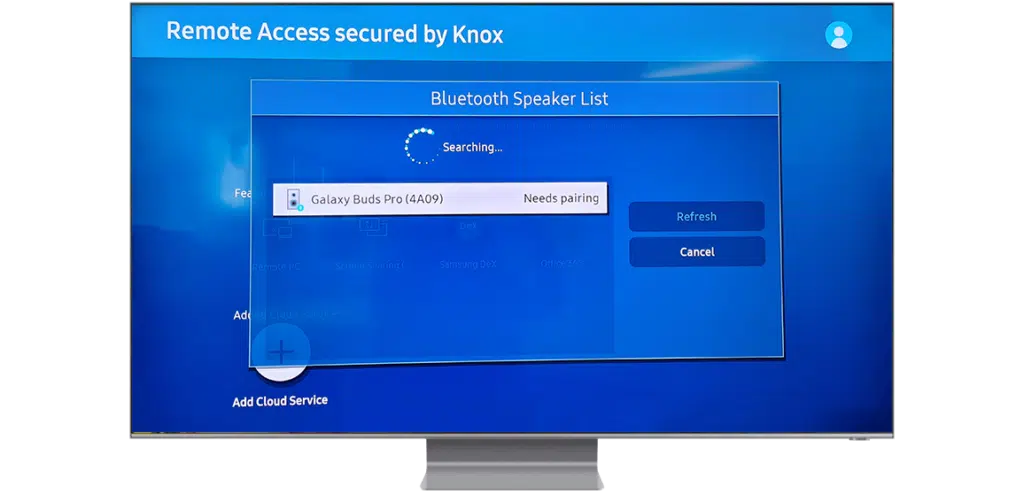If you want to watch TV while wearing headphones, there are a few ways to connect them to your display. One is to use Bluetooth.
Another way is to connect the headphones via your set-top box or streaming device. However, this can sometimes lead to audio delay issues.
Table of Contents
Bluetooth for How to Connect buds to TV:
If you have headphones or earbuds and want to use them to listen to your TV, it’s easy to connect them. Bluetooth is a wireless technology that sends data over short distances via radio waves.
It’s often used to connect mobile phones, audio players, and car stereos. But, it can also be used to listen to music on your TV.
To pair a pair of headphones to your TV, make sure they’re in pairing mode and then put them into the Accessory menu on your TV.
Once you have the headphones in pairing mode, they’ll show up on yours. TV’s on-screen display and you can select them using your TV’s remote control.
The one major downside of connecting headphones to a TV this way is that there can be some latency in the transmission of sound, but this is fairly uncommon and doesn’t really affect the listening experience.
AUX port:
Auxiliary inputs are a great way to connect your headphones or speakers to your TV. They are found on a wide range of audio devices, including smartphones, tablets, CD players, portable speakers, car stereos, and even some musical instruments.
AUX inputs are most often implemented with a 3.5mm audio jack, which is a standard male-to-male audio connector. It’s the same type of jack you see on your headphones and is designed to accept a variety of audio sources.
Most modern smartphones and laptops do not come with a headphone jack, but this port is still very useful for many audio devices. You can connect any device with a 3.5mm headphone jack to your television through an aux cable.
Auxiliary inputs are also compatible with Bluetooth headsets, which means you can use your buds for watching TV or playing games on your phone.
Just make sure to check the settings of your television to find out if it supports Bluetooth or not before you try connecting your headphones through this method.
Digital optical port:
The digital optical port (sometimes labeled TOSLINK) is a connection used to transfer audio between devices, like TVs, DVD players, and CD players. It uses a light transmission module to send a digital electrical signal through an optical cable.
Optical cables eliminate the problem of EMI (Electro-Magnetic Interference) that can occur with physical wires. They also offer more flexibility and weight than other connections.
This is because light travels faster than electricity, so it’s easier to transmit data through optical cables. They are commonly used for sending sound from a device to a TV, AV receiver, hi-fi DACS, and soundbars.

Despite some limitations, digital optical is still an excellent connection option for dedicated two-channel stereo audio and basic surround sound formats.
For example, PCM 2.0 delivers uncompressed audio, and there is very little difference between digital optical and two-channel analog.
However, high-bandwidth 5.1 and 7.1 surround sound formats that require HDMI connections cannot be transferred through digital optical.
USB How to Connect buds to TV:
USB is a standard connection that’s found on pretty much all personal computers, laptops, and smartphones. It allows for data transfer, as well as the power delivery and charging capabilities.
It’s important to note that the different versions of this standard differ in their design and speed standards. So make sure to verify the cable you’re buying matches your needs.
It’s also a good idea to check whether it is USB-IF certified. Which means that it has been tested and approved for use with the devices it connects to.
In general, the best way to connect headphones to your TV is to use Bluetooth technology. This is a low-latency codec that will allow you to hear audio without any lag. So it’s ideal for watching live sports or movies.





Add comment